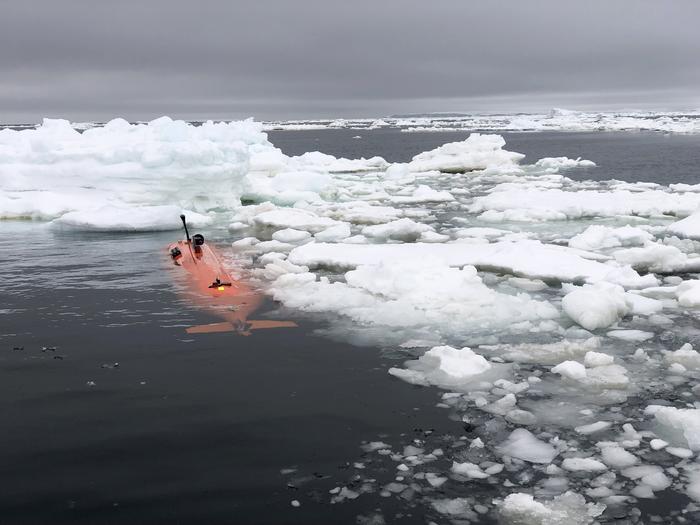A groundbreaking study using an autonomous underwater vehicle has provided the first detailed maps of an Antarctic ice shelf’s underside, offering new insights into glacier melting and potential sea level rise. The research, published in Science Advances, unveils complex melting patterns that challenge existing models and assumptions about ice shelf dynamics.
Unveiling the Hidden World Beneath Antarctic Ice
An international team of researchers deployed ‘Ran’, an unmanned submarine from the University of Gothenburg, beneath the Dotson ice shelf in West Antarctica. For 27 days, Ran traversed over 1,000 kilometers under the glacier, reaching 17 kilometers into the ice shelf cavity. This mission provided unprecedented high-resolution maps of the ice underside, revealing a complex landscape of peaks, valleys, and unexpected formations.
Lead author Anna Wåhlin, Professor of Oceanography at the University of Gothenburg, likened the experience to “seeing the back of the moon.” She explained, “We have previously used satellite data and ice cores to observe how glaciers change over time. By navigating the submersible into the cavity, we were able to get high resolution maps of the ice underside.”
Surprising Discoveries and New Questions
The study confirmed some existing theories about glacier melting, such as faster erosion where strong underwater currents impact the ice base. However, it also revealed unexpected features, including formations resembling sand dunes and a complex “peak and valley ice scape” with plateaus.
These findings challenge current understanding of ice shelf melting processes. Wåhlin noted, “It is clear that many previous assumptions about melting of glacier undersides are falling short. Current models cannot explain the complex patterns we see.”
Karen Alley, a glaciologist from the University of Manitoba and co-author of the study, emphasized the significance of these new maps: “The imagery from the base of Dotson Ice shelf helps us interpret and calibrate what we see from the satellites.”
Why it matters: Understanding the melting patterns of Antarctic ice shelves is crucial for predicting future sea level rise. The West Antarctica ice sheet, of which Dotson Ice Shelf is a part, has the potential to significantly impact global sea levels due to its size and location. More accurate models of ice shelf melting are essential for climate change projections and coastal planning worldwide.
The research presents several key implications:
- Improved climate models: The detailed mapping allows scientists to refine existing models of ice shelf melting, potentially leading to more accurate predictions of sea level rise.
- New research directions: The unexpected patterns observed beneath the ice shelf open up new avenues for glaciological and oceanographic research.
- Technological advancement: The success of this mission demonstrates the potential of autonomous underwater vehicles in exploring hard-to-reach environments.
- Interdisciplinary collaboration: The study highlights the importance of combining oceanographic and glaciological expertise to fully understand ice shelf dynamics.
However, the research also faced challenges. During a follow-up expedition in January 2024, Ran disappeared without a trace after completing only one dive. Wåhlin expressed both the value and the loss: “Although we got valuable data back, we did not get all we had hoped for. These scientific advances were made possible thanks to the unique submersible that Ran was.”
The disappearance of Ran underscores the harsh realities of conducting research in extreme environments like Antarctica. It also emphasizes the need for continued investment in advanced technologies for polar exploration.
Looking ahead, the research team hopes to continue this vital work with a replacement for Ran. Future missions could focus on:
- Long-term monitoring of ice shelf changes
- Exploring other ice shelves to compare melting patterns
- Developing more robust underwater vehicles for extended Antarctic missions
- Integrating underwater observations with satellite data for comprehensive ice shelf monitoring
As climate change continues to impact polar regions, studies like this one provide crucial data for understanding and predicting global environmental changes. The unexpected findings beneath the Dotson Ice Shelf serve as a reminder of how much remains to be discovered about our planet’s most remote and challenging environments.


